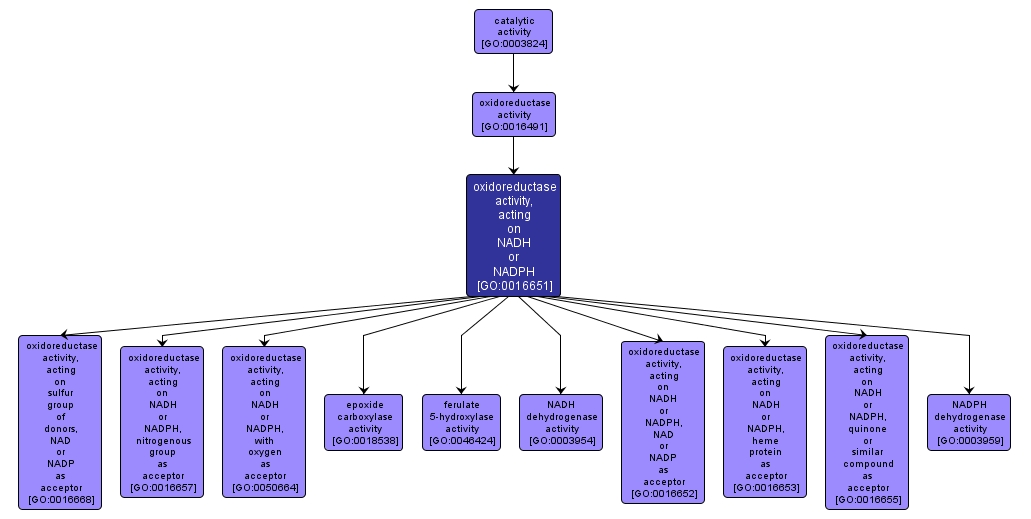GO TERM SUMMARY
|
| Name: |
oxidoreductase activity, acting on NADH or NADPH |
| Acc: |
GO:0016651 |
| Aspect: |
Molecular Function |
| Desc: |
Catalysis of an oxidation-reduction (redox) reaction in which NADH or NADPH acts as a hydrogen or electron donor and reduces a hydrogen or electron acceptor. |
Synonyms:
- NAD(P)H dehydrogenase
- oxidoreductase activity, acting on NADH or NADPH, other acceptor
|
|

|
INTERACTIVE GO GRAPH
|














